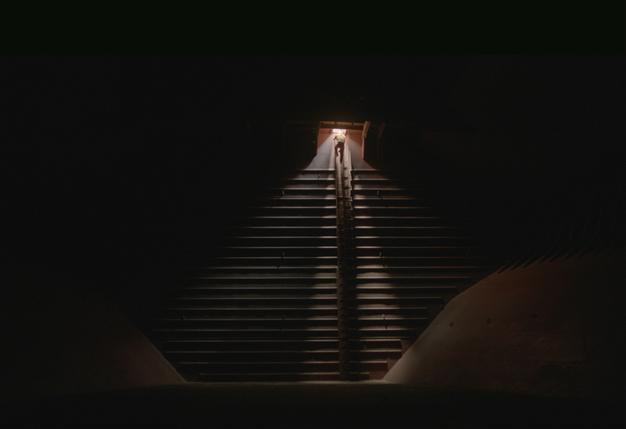‘Sarmaşık’: The Rime of the Turkish Mariner
Emrah Güler - ANKARA
 Verses from “The Rime of the Ancient Mariner,” English poet Samuel Taylor Coleridge’s long poem of the late 18th century, divide director and writer Tolga Karaçelik’s sophomore feature “Sarmaşık” (Ivy) into three parts: Three distinctive and definitive parts charting a man’s journey from possibilities of adventure to delirium.
Verses from “The Rime of the Ancient Mariner,” English poet Samuel Taylor Coleridge’s long poem of the late 18th century, divide director and writer Tolga Karaçelik’s sophomore feature “Sarmaşık” (Ivy) into three parts: Three distinctive and definitive parts charting a man’s journey from possibilities of adventure to delirium.The film begins with a dedication to three names. Coleridge is one, along with Herman Melville and Joseph Conrad. The latter two gave us eminent literary classics on the intricate relationship between man and the sea: “Heart of Darkness” and “Moby-Dick” (as well as Melville’s lesser-known sea adventure “Typee”).
Karaçelik’s “Sarmaşık” is a modern-day sea adventure, taking the sea (and the ship) as a setting to tell a story of social change and man’s presumed inherent darkness - similar to its literary predecessors that have served as Karaçelik’s inspiration.
At the heart of the film is a cargo vessel with Turkish crew that sails into the Mediterranean. The first part is an introduction to life in the vessel and life at sea, through the eyes of two of its characters who – like the audience - are novices to it all. The two men, Cenk (award-winning Nadir Sarıbacak) and Alper (Özgür Emre Yıldırım), are prototypical no-good men of the sea, cursing and dope-smoking. They are adventurers not by choice but through circumstance.
At first, life at sea seems to be going smoothly, thanks to the captain (Osman Alkaş), the figure of authority. That said, there is a palpable sense of impending doom, a tension waiting to explode at the first crack. Other characters are the dutiful and religious İsmail, the second-in-line to the captain (Kadir Cermik); the loyal cook Nadir (Hakan Karsak); and the giant Kürt (Seyithan Özdemir), a modern, Turkish/Kurdish take on Lennie from “Of Mice and Men.”
‘Authority that has lost its ground’
The second part - and the anticipated unraveling - begins when the ship is forced to anchor off the shores of Egypt, with the arrival of a message about the bankruptcy of the ship owner. They cannot pull into port because of the danger of all its property being impounded. The laws of the sea require six men to stay on board, so the troubled group volunteers to stay with the captain for some extra cash, as well as the paychecks already earned but not yet paid.
At a recent Q&A at the Festival on Wheels in Turkey, following the screening of his film, Karaçelik said his “main concern was to talk about authority that has lost its ground, and how that takes shape.” Authority, the failure of authority, and restlessness against authority all become the definitive forces in men’s relationship with one another. Authority in the ship is either blindly accepted or categorically rejected, both of which are recipes for disaster.
The second part of the film shows the unraveling of the crew, with the sense of time slipping away as days and weeks pass by on board with no change. The sense of claustrophobia is heightened by the deliberate lack of any view of the sea; the cold metal of the vessel dominates the cinematography. Karaçelik’s intentions are clear. As he told the audience in the Q&A: “I want time to blanket all the repetitiveness, along with all of the characters.”
The third part of “Sarmaşık” veers into the supernatural and the fantastical, as snails and ivy on the metal of the vessel start to take over the ship and the imagination of the crew. One of the men becomes lost, his ghost haunting some of the others. Before our eyes, the ship transforms from a vessel of adventure into one of delirium, the darkness inside each men manifesting in their actions.
“Sarmaşık” has been taking the national and international festival circuit by storm, winning awards for its director and its actors. It has been screened at the Sundance, Toronto, Sao Paolo, and Karlovy Vary film festivals, as well as others. Karaçelik’s foray into the heart of darkness is now showing in theaters with English subtitles. His debut 2011 feature, “Gişe Memuru” (Toll Booth), which is also a well-drawn tale of a man’s journey into insanity, should be seen too; in a sense it is a companion piece to “Sarmaşık.”
















